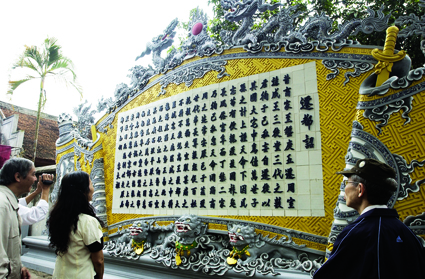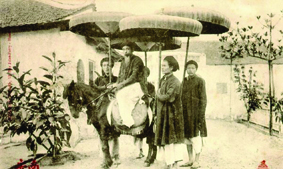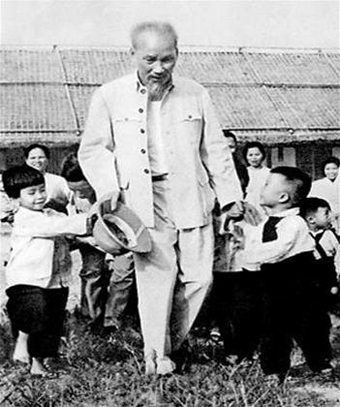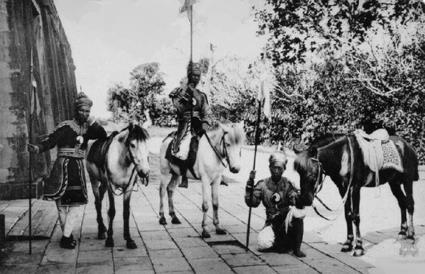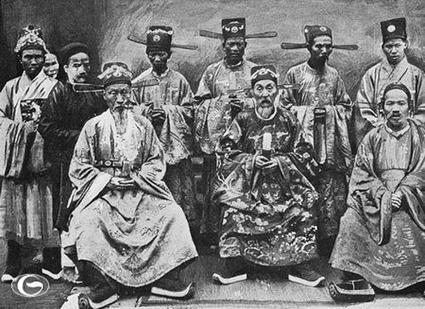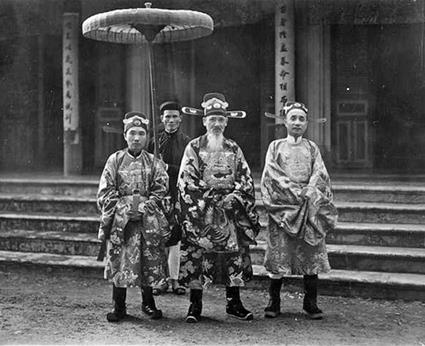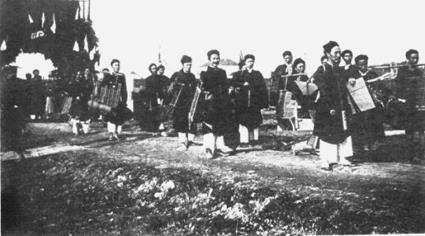>>Safeguarding of territorial waters under Ly and Tran dynasties
Do Danh Huan, MSc.
History Institute
Vietnam Academy of Social Sciences
Different studies have revealed that the incipient states in Southeast Asia in general and Vietnam in particular emerged mainly from agricultural production activities, including dyke construction and water control. Hence, the agriculture-inclined thinking strongly influenced many feudal kings in the royal palace as well as peasants in the village.
Before the formation of the Ly dynasty, feudal Vietnam witnessed various short-lived monarchies under the reigns of Ly Nam De, Ngo Quyen, Dinh Tien Hoang and Le Dai Hanh. These kings did not have enough time to establish comprehensive state institutions of their own, thus failing to bring into full play and tap to the utmost advantages of an agricultural country for national construction.
Yet, under the Ly dynasty, which existed for 216 years from 1009 to 1225, great importance was attached to agricultural production with the adoption of many preferential policies and the great concern of kings. During this time, land was classified into different types, including “ruong son lang” (the land with harvested yields to be used for worshipping royal ancestors); “ruong tich dien” (the royal court-managed land with harvested yields to be mainly used for worship at the royal palace while the remainder for distribution to the poor or for guest reception); “ruong quoc kho” (the state land with harvested yields to be kept in royal storehouses for exclusive use by kings and the royal court); “ruong lang xa” (village and commune land); and “ruong nha chua” (pagoda land)...
Ly kings personally plowed “ruong tich dien” to mark the beginning of a rice growing season and encourage peasants to follow. Truly, this was an ideological manifestation of an agriculture-inclined state. Though “ruong tich dien” accounted for a small percentage of the cultivated land, it played an extremely important role in the daily life as well as spiritual life of the royal court. Therefore, kings themselves went to “ruong tich dien” holding the rite to plow the first furrows. This bore profound significance as the expression of their continuity from the predecessors and gratitude to them and as their duty to worship ancestors with subsidiary crops and rice harvested from this land, as well as the demonstration of the concern of the top feudal rulers for agriculture, thus encouraging peasants to till the land with all their best.
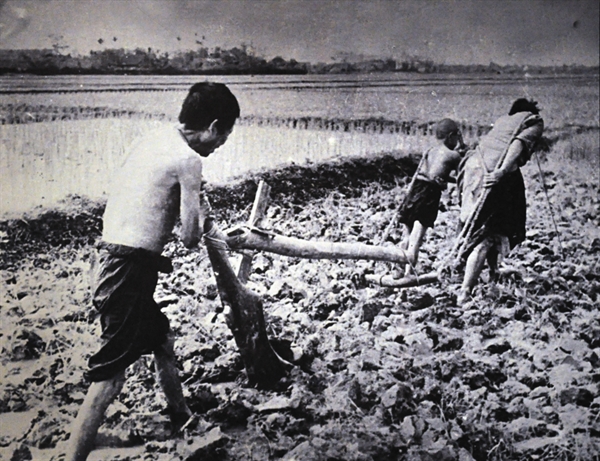 |
| Poor farmers plowing fields without buffalo in feudal times in Vietnam __Photo: Internet |
According to many official historical documents, “ruong tich dien” plots, where kings themselves plowed rice fields or watched farmers reaping rice, were distributed in different regions near or far from the royal capital city of Thang Long, such as Do Dong Giang area (of the present-day Thanh Oai district of Hanoi); Ly Nhan district (of present-day Ly Nhan district of Ha Nam province); and Nghia Hung area of the present-day Nam Dinh province.
Perhaps, King Ly Thai Tong, who succeeded the Ly dynasty’s founder - Ly Cong Uan (1009-1028), was the first to plow “ruong tich dien” in 1032, 1038 and 1042 in three different localities.
According to “Dai Viet Su Ky Toan Thu” (the Complete History of Great Viet), “In summer of the year of Nham Than (1032), the fifth Thien Thanh year, on the first day of the fourth lunar month, the king went to Tin Huong in Do Dong Giang area and plowed “ruong tich dien” there. In the spring of the year of Mau Dan (1038), the fifth Thong Thuy year, in the second lunar month, the king traveled to Bo Hai gate (of the present-day Thai Binh city), and plowed a rice field. He worshipped the agricultural genie with full rituals before taking a plow to till despite dissuasion of mandarins... He returned to the royal capital city in the third lunar month... Once again, in the third lunar month of the year of Nham Ngo (1042), the fourth Can Phu Huu Dao year, the king went to the coastal place of Kha Lam and plowed “ruong tich dien.”
In addition to plowing, King Ly Thai Tong also travelled to see peasants reaping the rice, at least once in Dieu Lo area in the winter of the year of Canh Ngo (1030) as recorded in ancient historical books.
Being the eldest son of King Ly Thai To, King Ly Thai Tong sat on the throne for 27 years from 1028 to 1054. Despite dissuasion of many mandarins that the king should not plow rice fields by himself, he always held that for the ancestors and the life of commoners he was not hesitant in doing the peasants’ work.
Though his deeds were ceremonial, they signified the beginning of a new rice growing season. Historian Ngo Si Lien remarked: “Thai Tong revived the ancient rites, plowing “ruong tich dien” by himself as an example for people, first for the worship of ancestors, then for feeding the people, thus leading to his effective reign with a large population and great wealth.”
King Ly Thai Tong’s successor, Ly Nhan Tong, made four trips to watch peasants plowing rice fields in Ung Phong (the present-day Nghia Hung of Nam Dinh province), two in 1117, one in 1124 and one in 1125. This king also made five tours to watch rice reaping in Khai Thuy and Ung Phong areas in 1117, 1123, 1125, 1126 and 1127.
King Ly Anh Tong (1136-1175) is the second king mentioned in Dai Viet Su Ky Toan Thu as personally plowing “ruong tich dien”: “In the second lunar month of Mau Thin (1148), the ninth Dai Dinh year, the king went to Ly Nhan royal stop-over palace (the present-day Phu Ly of Ha Nam province) and plowed “ruong tich dien” before traveling to Ung Phong royal stop-over palace for a rest.”
It is noteworthy that the Ly kings ordered the construction of royal stop-over palaces in places near “ruong tich dien” plots for them to take rest during land-plowing or rice-reaping watch tours.
Agricultural production during the Ly dynasty strongly developed with bumper crop after bumper crop in 1016, in 1030 when King Ly Thai Tong himself watched rice reaping in Dieu Lo, in 1092, then in 1123. This was greatly attributed to the agricultural promotion policies adopted by the Ly dynasty and the kings’ deeds of land plowing and rice-reaping watch.
According to Dai Viet Su Ky Toan Thu, in the second lunar month of Dinh Dau (1117), the eighth Hoi Truong Dai Khanh year, the king issued an order to prohibit buffalo slaughtering and impose severe punishment on buffalo butchers with 80 “truong” (strokes of cane) or servitude in various forms.
In Dai Viet under the Ly dynasty, agricultural production played the major role in economic activities, in addition to handicraft and cottage-industrial production. The Ly kings’ exemplary deeds of land plowing or rice-reaping watch showed the central state’s great concern for agricultural production in particular and peasants’ life in general.-
